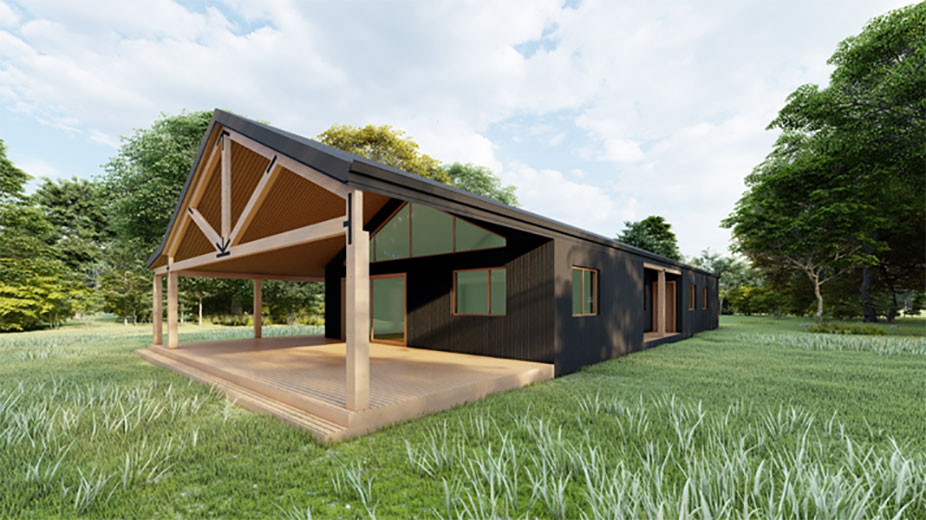|
With construction costs on the rise, the need to minimise avoidable costs elsewhere in the home-building process is even more important. One of the most common pitfalls we see from people investing in new build homes is runaway design costs, which result from designs that must be revised or even completely redrawn because crucial input wasn’t sought early enough.
Currently, construction is going to cost more than usual, so it’s important to get your design right straight away. This is what the Shoebox Model has been developed to address. Created by Sustainable Engineering Ltd, the Shoebox Model is a great way to make Passive House principles a part of the conversation at just the right time. Learn more about the Shoebox Model and how it can benefit your Passive House design below. Construction costs are on the rise
High demand for homes in 2021 has included both existing homes and new builds. New dwelling consents have reached their highest levels since about the mid-1970s, according to Australasia property analytics company CoreLogic.
Numerous factors are currently contributing to rising construction costs in New Zealand. The impact of COVID-19 on international shipping has dampened the availability of materials and domestic shortages of structural timber haven’t filled the gap. Recent changes to government tax policy have incentivised investors towards new-build properties, and a renewed push for more government-funded housing may well pit private and public sector builders against each other in competition for resources.
How the Shoebox Model came about
Passive Homes are gaining steam in New Zealand. More and more people are interested in making their new build home a passive home, but many have already had their designs drawn up. When they finally get passive house builders like us involved, many designs that would affect the home’s performance have already been through consent. At this stage, it’s either too late to make the necessary changes or will be considerably expensive and time-consuming to do so.
That has posed a challenge for sustainable home advocates like Craft Homes and Sara Wareing at Sustainable Engineering Ltd. People need input from Passive House specialists before they’ve finished their design, but Passive House specialists could historically provide more detailed insight if they had a design to look at. That’s why Sara helped develop the Shoebox Model. The Shoebox Model is a service designed to provide feedback on a home’s performance based only on a sketch or floor plan, the site, and a glazing estimate. The service is affordable, simple, and quick, and has been purpose-built to provide adequate feedback early enough in the design process to have a meaningful impact. How the Shoebox Model works
The Shoebox Model takes a broad-strokes approach to put you on the right path, based on the Passive House standard, PHI Low Energy Building standard, or wherever else you wish to land that exceeds the Building Code minimum.
This works because some of the simplest design elements can provide enough information to facilitate helpful feedback. The report lays out what R-Value (the level of thermal resistance) will be necessary to achieve various levels of performance. It will identify the areas of greatest concern and opportunities for easy, affordable ways to improve performance, such as the building’s form factor; simpler building shapes like rectangles are not only quicker and easier to build but also make the home more efficient, while more angles and curves make it harder to make the home airtight. The Shoebox Model works for renovations as well as new builds and is easy to revise if your design concept changes. The service will make Passive Houses achievable for a broader swath of New Zealand’s architects and home builders.
The benefits of getting your design right early
The most cost-effective way to build a Passive House is to take performance into account from the earliest stages of the design. Unfortunately, too many clients come to us at Craft Homes with a design they’ve already paid for, only to find that major changes will be necessary to achieve the level of efficiency they seek. With construction costs rising, the prospect of doubling back and paying to implement those revisions will be even more daunting.
That’s why the Shoebox Model is so important. By making informed decisions at the design stage, you’ll save time and money on a more efficient home, and the money you save on your home’s operating costs will justify your investment even sooner.
How Craft Homes can help
Craft Homes makes it easier to build the Passive House you’ve been dreaming of—a beautiful and efficient home that will hold up and save you money. If you’re interested in building a Passive House, come talk to us as soon as possible. With a Passive House specialist involved from the outset, you’ll find it easier to build the efficient, sustainable home you’ve been dreaming of.
3 Comments
1/3/2022 02:19:36 pm
I am Very thank full the owner of this blog. Because of this blog is very informative for me..
Reply
8/7/2022 02:30:10 pm
The electrical components and system also depends on the design. Since the areas to put lights and electrical appliances are considered.
Reply
14/12/2022 05:53:07 pm
Didn't know contemporary designs actually look modern in some way. Cool...
Reply
Leave a Reply. |
AuthorToby and Cat Tilsley Archives
September 2021
Categories |


 RSS Feed
RSS Feed


